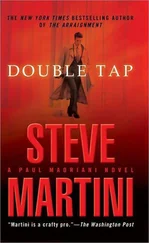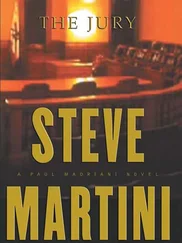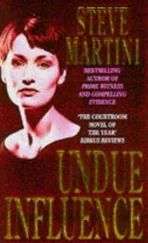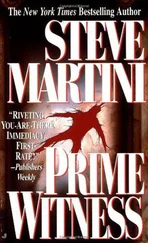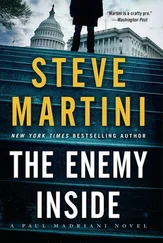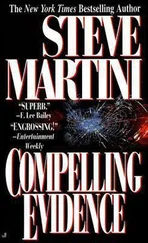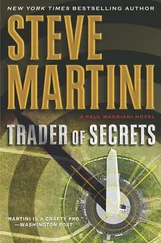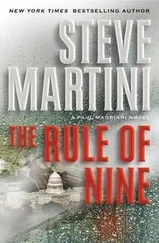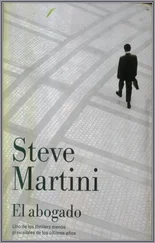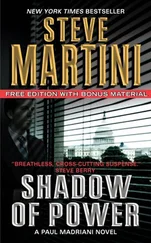Steve Martini - The Arraignment
Здесь есть возможность читать онлайн «Steve Martini - The Arraignment» весь текст электронной книги совершенно бесплатно (целиком полную версию без сокращений). В некоторых случаях можно слушать аудио, скачать через торрент в формате fb2 и присутствует краткое содержание. Жанр: Криминальный детектив, на английском языке. Описание произведения, (предисловие) а так же отзывы посетителей доступны на портале библиотеки ЛибКат.
- Название:The Arraignment
- Автор:
- Жанр:
- Год:неизвестен
- ISBN:нет данных
- Рейтинг книги:4 / 5. Голосов: 1
-
Избранное:Добавить в избранное
- Отзывы:
-
Ваша оценка:
- 80
- 1
- 2
- 3
- 4
- 5
The Arraignment: краткое содержание, описание и аннотация
Предлагаем к чтению аннотацию, описание, краткое содержание или предисловие (зависит от того, что написал сам автор книги «The Arraignment»). Если вы не нашли необходимую информацию о книге — напишите в комментариях, мы постараемся отыскать её.
The Arraignment — читать онлайн бесплатно полную книгу (весь текст) целиком
Ниже представлен текст книги, разбитый по страницам. Система сохранения места последней прочитанной страницы, позволяет с удобством читать онлайн бесплатно книгу «The Arraignment», без необходимости каждый раз заново искать на чём Вы остановились. Поставьте закладку, и сможете в любой момент перейти на страницу, на которой закончили чтение.
Интервал:
Закладка:
“You have met my sons?” he says.
“Only one of them. Arturo. The other, Jaime is it? He wasn’t there.”
“You are probably lucky. Jaime has a bad temper. They have been involved in activities for which I am ashamed.”
“And I suppose they did this all by themselves?” says Herman.
“I admit at times I have done things for which I am not proud. But I didn’t want my sons to grow up this way. I have tried every way to stop them. Even gone to the authorities. But you know what Cancun can be like.”
“Here we go,” says Herman. “Fuckin’ mistakes been made. Next he be tellin’ us he got religion when he seen the light coming outta the little hole at the end of my gun.”
“Believe me. I have tried to stop my sons, but they will not listen. All they want is my money, to finance their schemes. When I refused, they found other sources.”
“Narcotics?” I ask.
“For a time. But that stopped. I was able to influence certain people.”
“Your children cuttin’ into your profits, were they?”
“I do not deal in drugs. I do not allow them on the premises of my hotel.”
“You wrote a letter to a lawyer in San Diego, a Mr. Nicholas Rush. What was that about?”
Ibarra looks at me, puzzled. “How do…”
“Never mind that. What did Mr. Rush have to do with your sons? And who or what is Mejicano Rosen?”
“Then you know about it? It is pronounced Roseton. Not Rosen.”
“What is it?” I ask.
“Roseton means Rosette in Spanish. The French under Napoleon, when they found it, they named it the stone of Rosette after the name of the village in Egypt where it was discovered. The English called it Rosetta.”
“What’s this shit?” says Herman.
“The Rosetta Stone,” I say. “It’s a fractured slab of rock found by Napoleon’s forces when they invaded Egypt. It was engraved with ancient Egyptian hieroglyphs along with a Greek translation. It allowed archeologists for the first time to understand the language of pharoahs.”
Herman has a dense look on his face. “Wait a minute. You lost me. You tellin’ me this ’bout some rock from Egypt?”
“No,” says Ibarra. “The Mejicano Roseton in your language is the Mexican Rosetta. It is the last remaining key to the ancient hieroglyphs of the Maya.”
“Do you have it?” I ask.
“Unfortunately no.”
“Where it is?”
“I cannot be sure, but I know that it exists and that it is priceless. My sons have been trying to acquire it.”
“Is that what Nick Rush was after?”
He nods. “He had been doing business through another man.”
“Gerald Metz?”
“How did you know that?”
“Never mind. Go on.”
“This man Metz had done business with my sons previously.”
“What kinda business?” says Herman.
“My boys were looting archeological sites. At first they were simply buying a few trinkets from the Indians who found things in the jungle, small figures carved in jade, sometimes trinkets in silver or gold. My sons would then sell these items to dealers in your country or in Europe. Wherever they could be paid the most. Occasionally they would find something more valuable.
“Then Arturo and Jaime began locating sites that were still covered by jungle. They are easy to spot if you know what you are looking for. In the Yucatan, the jungle floor is flat. Any rise, a small mound, what looks like a hill, is very often the remains of a Mayan structure overgrown by trees and vines. They learned how to find these. They hired laborers and destroyed sites, looking for treasure.”
“Didn’t your government try to stop them?”
“They tried. But it is impossible. There are too many locations, not enough guards. Your government demands that we control the flow of narcotics through our country. That is the priority. The sale of looted artifacts is a huge business. Thousands of items are taken every year from Mexico and Guatemala and sold on the black market. Some of these people are drug dealers. They make more selling artifacts than they do selling drugs, and there is less risk. You do not go to prison for life for stealing Mayan relics.”
“Who would buy them?” I ask.
“There are people who deal in such things. They sell the items to wealthy Americans, so their wives can have figurines made into earrings and tell their friends where they came from. The larger, more expensive items are another matter.”
“That’s what we saw at the trailer,” I tell Herman.
“What?” says Ibarra.
“It looked like a large slab of stone, like a headstone, only taller. We couldn’t see it very well. They had it covered with a blanket.”
“Tell me. Did you see white paint on it?”
“On a corner, under the blanket. It looked like whitewash.”
“A stela,” he says.
“What estella?” says Herman.
“A stela. It is a stone sign used by the Maya for historical and religious purposes. They would cover the stone in white limestone plaster. Then they would carve their hieroglyphs into this softer material. There are maybe thirty or forty of them that we know of, and most of them cannot be read. The jungle moisture has destroyed the writing. I had heard that my sons had found one.”
“So they’d sell it, right?” says Herman.
“Yes.”
“How much they get?”
“If the one they have is legible, tens of thousands, perhaps a hundred thousand U.S. dollars. If what is on it is important, if it reveals unknown information about Mayan rulers, their civilization, it could be worth much more.”
“And this ain’t the Rosetta thing you was talking about?”
Ibarra shakes his head.
“That be worth more, right?”
“You cannot put a value on the Mejicano Roseton.”
“Tell us about it?” I say.
“I take it you have never seen a picture of the Mayan codices?”
“Uh… ah…” Herman looks at him.
“They are books made of tree bark that has been flattened and covered with a lime paste, like the stelae. The pages are folded like an accordion and painted in vivid colors with hieroglyphs.
“There are only four of them known to be in existence. They are located in various museums around the world: Dresden, Madrid, Paris. One is in the hands of a private collector. They are the only remaining books of Mayan history written by the original scribes. All of the others were destroyed by Spanish missionaries. The books were believed by the Spaniards to be tools of the devil.
“A Franciscan missionary, his name was Diego de Landa, he burned hundreds of the Mayan books in the great auto-da-fe in 1562.”
“What the fuck’s a auto dafay?” says Herman “The Inquisition. The Spaniards burned the books, along with the Mayan scribes who wrote them, so that the books could not be re-created.”
“What’s this got to do with this Rosetta thing?”
“I am getting to that. Before de Landa burned all of the Mayan books, about forty years earlier, a group of Spaniards were shipwrecked in the Caribbean off the coast of what is now Mexico. They were washed up on a beach on the Yucatan not far from here, and they were captured by the Mayas. All of them were put to death, except two. A man named Gonzalo Guerrero and a shipmate named Jeronimo de Aguilar. These two survived. They lived with the Maya in captivity for eight years, until the Conquistador Hernan Cortes, the man who conquered the Aztecs, heard about them and paid a ransom.
“De Aguilar went back and became the translator for Cortes. He became very important in the conquest of the Mayas.”
“The other man, Guerrero, did not go back. He had married a daughter of one of the Mayan rulers and became a Mayan warlord.”
“He went native,” says Herman.
Читать дальшеИнтервал:
Закладка:
Похожие книги на «The Arraignment»
Представляем Вашему вниманию похожие книги на «The Arraignment» списком для выбора. Мы отобрали схожую по названию и смыслу литературу в надежде предоставить читателям больше вариантов отыскать новые, интересные, ещё непрочитанные произведения.
Обсуждение, отзывы о книге «The Arraignment» и просто собственные мнения читателей. Оставьте ваши комментарии, напишите, что Вы думаете о произведении, его смысле или главных героях. Укажите что конкретно понравилось, а что нет, и почему Вы так считаете.

